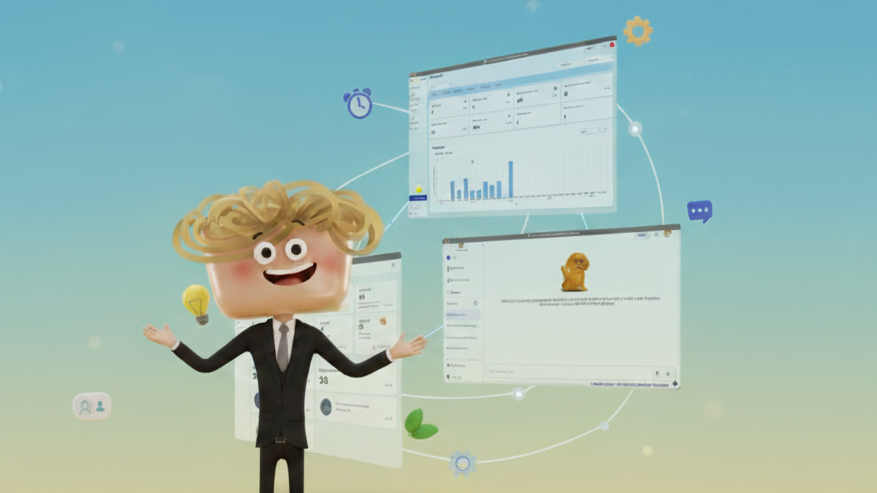
The Future of Education: How Generative AI is Reshaping Classrooms
Aug 19, 2025Introduction
Imagine a teacher starting their day with a pile of lesson prep, quizzes to grade, and emails to answer before the first bell rings. It is no wonder many educators feel stretched thin.
Generative AI is changing that. It is not just another buzzword. It is a practical tool teachers are already using to save time and personalize learning. Generative AI refers to artificial intelligence systems that can create original content based on the data they have been trained on. In the classroom, that means instantly generating quizzes, lesson plans, simulations, and more.
In fact, 60% of teachers say they have already integrated AI into their daily teaching practices, according to AIPRM. And the momentum is only growing. Why? Because AI addresses two of education’s toughest challenges: time and personalization.
At Noodle Factory, we help educators use AI to lighten administrative load and create richer learning experiences for students without adding hours to their day. In this article, we will explore the benefits, challenges, and practical ways to integrate Generative AI in classrooms.
What is Generative AI and Why It Matters for Education
In the context of teaching, Generative AI is AI-powered learning that can create versatile educational content on demand. Need a differentiated reading passage? A set of practice problems? A personalized quiz? It can produce it in minutes, based on the needs of your students.
For educators, this means faster lesson planning, automated grading, and even real-time student support. For students, it means feedback that arrives instantly, explanations tailored to their learning style, and interactive activities that adapt as they learn.
How Generative AI Supports Teachers
Generative AI tools have changed teacher workflows by:
- Saving time on admin tasks: Automated attendance, quick resource generation, and ready-made assessment designs free up hours each week.
- Providing personalized learning materials: Adjust reading levels, adapt exercises for different abilities, and create resources that meet individual student needs.
- Assisting with grading and feedback: Instantly grade assignments using your own rubric, giving students timely feedback while freeing you for more meaningful interactions.
By cutting down on repetitive tasks, teachers can focus on what really matters: teaching, connecting, and inspiring.
How Generative AI Benefits Students
From a student’s perspective, AI-powered learning offers:
- Self-paced exploration: Students can move through content at their own speed, using AI as a personal tutor.
- Instant feedback: No more waiting days to know how they did. Feedback is immediate, helping them learn and adjust in real time.
- Support for diverse learning styles: Whether a student learns best through visuals, step-by-step guides, or hands-on practice, AI can adapt its approach.
The result is that students take more ownership of their learning while feeling supported every step of the way.
Addressing Concerns and Misconceptions
Like any new technology, Generative AI comes with valid concerns. We have covered these in more detail in our Generative AI in Education FAQ, but here are some of the most common concerns:
- Accuracy and bias: AI content should always be reviewed for correctness and fairness.
- Plagiarism: Clear guidelines on ethical use, along with AI detection tools, can help ensure students use AI to learn, not shortcut.
- Replacing teachers: AI is a support tool. It cannot replace the human connection, empathy, and insight that great teachers bring.
When used thoughtfully, AI enhances rather than replaces the role of educators.
How to Integrate Generative AI into Your Classroom
You do not have to overhaul your teaching to start using AI. Begin small:
- Pick one task such as generating quiz questions or lesson outlines and let AI handle it.
- Set clear guidelines for students on ethical AI use to prevent plagiarism and promote learning.
- Use AI as a partner and as a complement to your teaching, not a substitute.
This gradual approach helps both you and your students get comfortable while building trust in the process.
The Future of Generative AI in Education
Generative AI is still in its early days in schools, but its potential is expanding fast. In the near future, we can expect:
- Agentic AI that proactively assists in lessons without prompts
- Voice-based AI tutors for natural, conversational learning
- Fully personalized learning pathways that adapt dynamically to each student
At Noodle Factory, we are building AI solutions that are safe, ethical, and scalable so educators can embrace these tools confidently and see real results in their classrooms.
Conclusion
Generative AI is already transforming classrooms by saving teachers time, personalizing lessons, and giving students more ownership of their learning. While there are concerns, safe and thoughtful integration ensures AI becomes a powerful partner in education, not a replacement for teachers. For more on how to use AI responsibly and effectively, see our Generative AI in Education FAQ.
Curious about what AI tools for teachers can do in your classroom? Explore Noodle Factory’s AI teaching and learning platform and see how we can help you save time, personalize learning, and inspire your students.
About the Author
Karnan Nithyanandan is a Marketing Intern at Noodle Factory. He currently is pursuing his undergraduate education at the University of Oregon and is committed on obtaining a degree in Business Administration. “He is passionate about using AI to create engaging learning experiences and is currently working on content and video projects for the education sector.” In his spare time, he enjoys playing sports, traveling, and hanging out with friends. You can connect with Karnan on LinkedIn.


